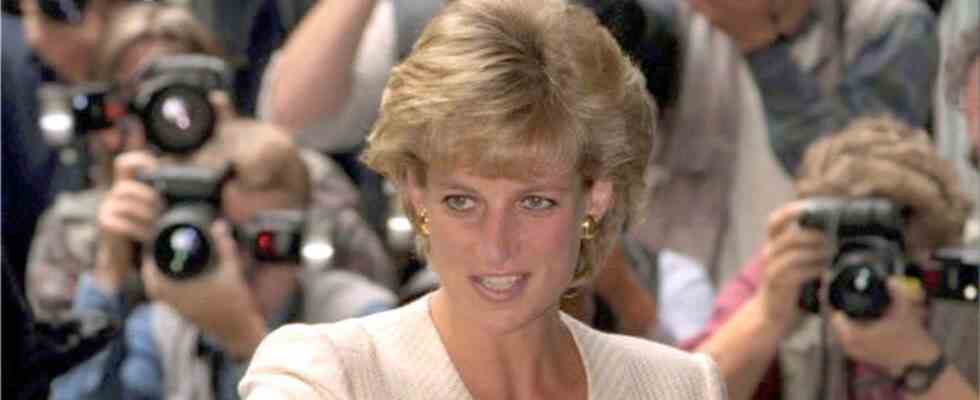Status: 08/31/2022 02:52 a.m
Photos and stories of Lady Di guaranteed high circulation in British tabloids, and she was followed everywhere. But Diana was not only a victim of the press. She also knew how to use the media for herself.
August 31, 1997, just after midnight. Crowds of photographers and onlookers gathered in front of the Ritz Hotel in Paris. Suddenly there was movement in the crowd, men jumped into cars, turned with squeaking tires, motorcycles chased a dark Mercedes. Inside were Diana with her boyfriend, Dodi Al Fayed, her bodyguard, and the Ritz’s chief of security, who was driving the car.
The Mercedes crashed into the tunnel at the Pont de l’Alma near the Eiffel Tower. The car hit the 13th concrete pillar in the middle of the tunnel and was thrown back against the right tunnel wall. Diana’s friend Dodi and the driver died at the scene of the accident. Diana had to be cut from the wreck. She later died in hospital. She was 36 years old. The bodyguard survived.
Dirty divorce war
Diana’s brother Charles Spencer blamed the media for his sister’s death. At her funeral, he finds clear words: “I don’t think she ever understood why her very best intentions were always trashed by the media. Why they always sought to destroy them. My only explanation is that the truly good one Threat is for those on the other end of the moral spectrum.” The greatest irony is that Diana, named after the ancient goddess of the hunt, has become the most hunted person in this modern era.
The wrecked Mercedez in the tunnel at the Pont de l’Alma near the Eiffel Tower. Diana died in hospital shortly after the accident.
Image: AP
Photos and stories of Diana guaranteed tabloid circulation for years. And the dirtier the divorce war or the deeper the kisses with her new boyfriend, the better. The director Ed Perkins, who brought the documentary “The Princess” to the cinema this year, describes how depressing he found the research for the documentary. “I spent hours looking through footage from paparazzi cameras. And I felt very uncomfortable with the way people’s lives were being invaded,” he says. But he also felt uncomfortable as a spectator, because the spectator ultimately generates the demand.
“Readers wanted these stories”
Author Ian Hislop has been the editor of the satirical magazine Private Eye for over 30 years and recalls that after Diana’s death the issue was boycotted by some newsagents because they felt the cover was inappropriate. “A lot of people thought it was tasteless at the time,” he says. “It was an attack on the general public, who seemed to us to be no less to blame than the media.”
The cover from back then showed the crowds in front of the palace. A man says, “The newspapers are absolutely disgusting.” And another replies: “Yeah, I couldn’t even get one anymore.” Hislop says, “We wanted to show that with all this outrage towards the press, you shouldn’t forget that the readers always wanted to read all these stories about Diana. And that made them complicit.”
Driver was drunk
Two years after Diana’s death, a French court ruled that the slain driver, Henri Paul, head of security at the Ritz, was intoxicated and lost control of the vehicle. But conspiracy theories were booming and were gratefully disseminated by the tabloids.
The father of Diana’s friend Dodi, the Egyptian billionaire Mohammed Al Fayed, was convinced: Dodi and Diana were murdered by the royal family because they should not marry a Muslim. After a mammoth trial with 240 witnesses, the British judiciary also came to the verdict in 2008 that the driver and the paparazzi were to blame for the accident. It was negligent homicide.
“She got better and better”
But of course Diana also needed the media. A princess who hugged children with AIDS needed journalists to bring it out into the world. Diana was keenly aware of how she could use the press for her own good, Alastair Campbell has observed. He was newly appointed Prime Minister Tony Blair’s press officer in 1997 when Diana died and was part of the planning committee for her funeral.
In the beginning, she didn’t even know what was happening to her when there were cameras and photographers everywhere taking pictures, he says. “And then she realized she had to control that. And she got better and better at presenting herself the way she wanted to be seen – while also making sure the media got what they wanted.” Some of the most powerful images may have been taken while the press was chasing them. “But she controlled what she wanted to show.”
Palace exercises control
Paparazzi crossings have declined overall since Diana’s time, although Diana’s sons, Princes William and Harry, have also repeatedly sued newspapers. But reporting on the royals in general remains a challenge, says Johnny Dymond, one of the BBC’s royals reporters. One problem is the limited access, the control that the palace exercises at all times.
“Otherwise you have many sources for every topic, here it’s just one,” says Dymond. “They announce what’s newsworthy. But that’s often ceremonial and frankly dull.” And if you came across topics that were really interesting, the palace would say, “That’s a private matter.”
25th Anniversary of Death – Lady Di and the Media
Gabi Biesinger, ARD London, 8/30/2022 7:51 p.m

